Home : Key Stage One : Design Technology
Movement Mechanisms
Discover lesson plans, classroom worksheets and interactive activities to develop skills in design technology for Key Stage One to teach about building products with different mechanisms to create movement
-

Moving Puppets
Explore and test some of the different mechanisms that can be used to move and control puppets
-

Farm Puppet
Design and make a puppet of a farmer using a movement mechanism to illustrate the character
-
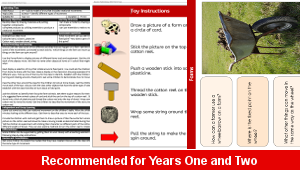
Spinning Toy
Build a model of a toy that includes rotational movements to show what might happen on a farm
-
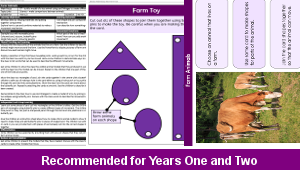
Farm Animals
Design and build a model of a toy animal using card linkages to create different movements
-

Wobbly Animals
Design and build a model of a farm toy animal using card linkages to create different movements
-
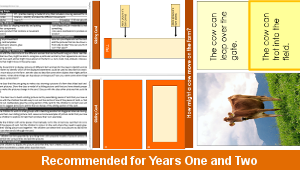
Sliding Toys
Practise using different materials to produce a model of a toy that includes a moving element for sliding
-
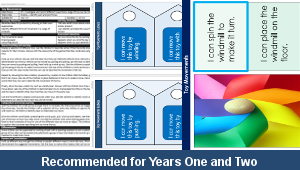
Toy Movements
Investigate and record some of the different ways that a range of toys can be moved when playing
-
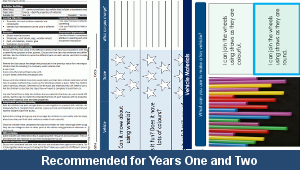
Vehicle Building
Construct and test a toy vehicle that includes a movement mechanism produced by combining different materials
-

Vehicle Design
Select and record how to construct and use a movement mechanism to build a toy vehicle
-
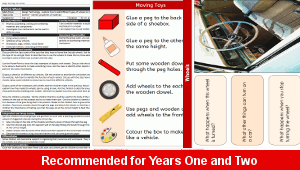
Vehicle Wheels
Explore and record how to add different types of wheels to model toy vehicles to produce movement
-
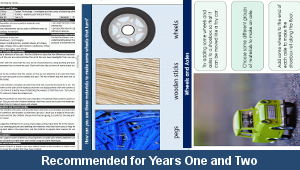
Wheels and Axles
Investigate and test a range of different ways of attaching wheels to toy vehicles to produce movement
-
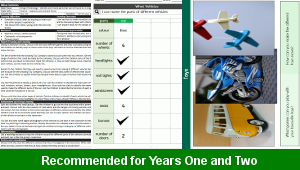
What Vehicles
Identify, describe and record parts that can be found on a range of different toy vehicles
Design Technology Teaching Topics
- Shape MatchingIdentify, describe and compare different 2D shapes by their matching individual properties including the number of sides, vertices and lines of symmetry
- Shape ChangesExplore and illustrate how to make patterns of 2D shapes by changing their size and position
- Shape PatternsIdentify and describe some of the patterns that can be made using different sequences of 2D shapes
- Shape GroupsSelect and group sets of different 2D shapes by their matching vertical lines of symmetry




